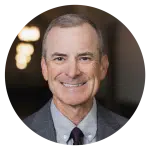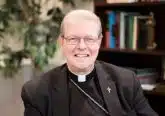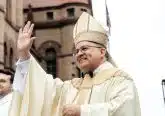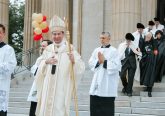A distilled Church will be a Faithful Church
In 1969, German theologian Joseph Ratzinger – later Pope Benedict XVI – gave a radio address in which he asked, “What will the Church look like in 2000?” His evaluation of the Church’s condition in 1969 is acute and thoughtful. His prediction for the Church’s future state is remarkably prescient.
Both his analysis and forecast speak to us Catholics in the Archdiocese of Cincinnati as the Beacons of Light pastoral planning process is implemented. And because the eyes of the Catholic Church in the U.S. are on us, Father Ratzinger’s counsel has broad application beyond our archdiocese. Spoiler alert: he predicted that the Church would be considerably smaller in 2000 than it was in 1969. And, of course, as measured by Mass attendance, it is smaller in 2022 than it was in 2000.
Many people reacted to Beacons of Light with confusion, frustration and perhaps even anger. Neither surprising nor necessarily bad, these reactions should not define our evaluation of the process or its results. It is naïve to assume that the Church will not experience painful changes over time, nor that the changes will not affect our parish lives. As Father Ratzinger said, “Because faith and the Church reach down into those depths from which creative newness – the unexpected and unplanned – are constantly coming forth, their future remains hidden to us.”
In other words, we should neither think we can confidently predict the Church’s direction nor be surprised when painful change occurs. “The dissimilarity between the past and present is the reason for uncertainty,” explained Father Ratzinger, “the similarity is the basis for orientation and correction.”
In some significant measure, the declining Church attendance crisis is not merely about those who left, but also about those of us who stayed. We must ask ourselves if we have formed our lives to demonstrate the truth of our faith as a compelling alternative to the secular world’s offerings. Or have we compromised our own witness by accommodating to secular culture, such that the “faith” we profess sounds no different from the ideology of American private morality? We must face the uncomfortable fact that many of us primarily embrace American individualism’s tenets rather than the “faith that was once for all delivered to the saints” (Jude 1:3). Many are leaving not because they reject the truth of Christian faith, but because they don’t find it professed in the Catholic Church. If the Church tells secular society what it already knows, what is the point of the Church?
The purpose of Father Ratzinger’s address – consistent with the purpose of Beacons of Light – is to consolidate the resources of us who remain so we may face the future as a smaller but stronger Church. “The future of the Church will issue from those whose roots are deep and who live for the pure fullness of their faith,” he explained. “It will not issue from those who accommodate themselves to the passing moment.. . . . Nor will it issue from those who take the easier road, who sidestep the passion of the faith.”
And, as though he were reaching across the decades to address Beacons of Light, Father Ratzinger explained:
From the crisis of today the Church of tomorrow will emerge as a Church that has lost much. She will become small and will have to start afresh. She will no longer be able to inhabit many of the edifices she built in prosperity As a small society, she will make much bigger demands on the initiative of her individual members.
When attendance drops, we cannot be surprised by the practical measures necessary to address the decline. And those of us who remain will have more work to do. But, as Father Ratzinger concludes, the Church that emerges on the other side of this painful process has the potential to be stronger, purer and more faithful to the gospel.
We see signs of this already. While parish attendance has declined, vocations to the priesthood have increased. And recent polls suggest that these men, in this archdiocese and elsewhere, are more strongly and faithfully committed to the Church’s teachings than prior generations. These are men who know they are entering a time of distillation in the Church, but they will serve a Church that is made purer by the pain of the process. Because what will emerge, as Father Ratzinger concluded, is “the Church of faith” where we will “find life and hope beyond death.”
 Dr. Kenneth Craycraft is an attorney and the James J. Gardner Family Chair of Moral Theology at Mount St. Mary’s Seminary & School of Theology.
Dr. Kenneth Craycraft is an attorney and the James J. Gardner Family Chair of Moral Theology at Mount St. Mary’s Seminary & School of Theology.
This article appeared in the January 2022 edition of The Catholic Telegraph Magazine. For your complimentary subscription, click here.













